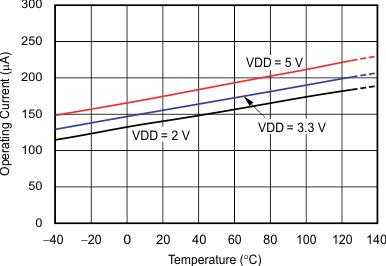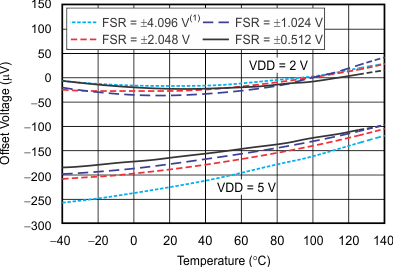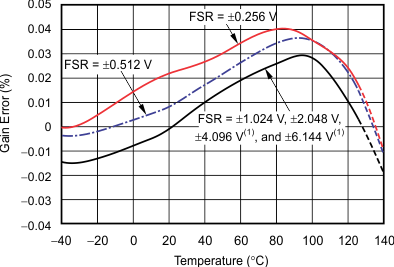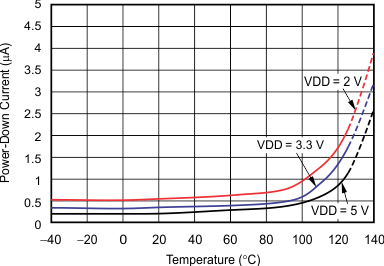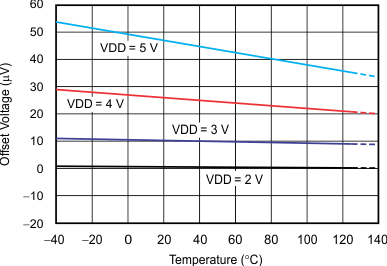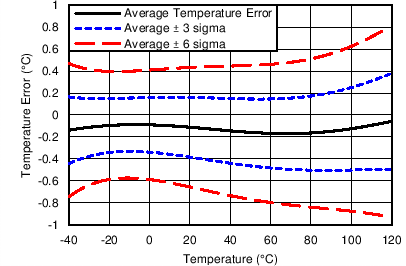SBAS526D November 2012 – September 2019 ADS1018
PRODUCTION DATA.
- 1 Features
- 2 Applications
- 3 Description
- 4 Revision History
- 5 Device Comparison Table
- 6 Pin Configuration and Functions
- 7 Specifications
- 8 Detailed Description
- 9 Application and Implementation
- 10Power Supply Recommendations
- 11Layout
- 12Device and Documentation Support
- 13Mechanical, Packaging, and Orderable Information
7.8 Typical Characteristics
at TA = 25°C, VDD = 3.3 V, and FSR = ±2.048 V (unless otherwise noted)